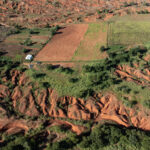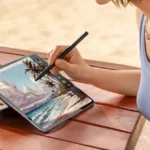Embarking on one of the most ambitious journeys in the annals of human achievement, NASA’s Voyager missions stand as monuments to human curiosity and ingenuity. Launched in the late 1970s, these spacecraft were designed to take advantage of a rare planetary alignment that would allow them to visit all four outer planets. More than four decades later, the Voyagers continue to relay invaluable data back to Earth, pushing the boundaries of what we know about the outer solar system and beyond.
NASA’s Voyager: Journey to the Unknown
In 1977, NASA launched Voyager 1 and Voyager 2, twin spacecraft destined to explore the vast uncharted expanses of our solar system. The primary mission was to study Jupiter, Saturn, Uranus, and Neptune—a task completed with unprecedented detail. As they journeyed through the solar system, their trajectory was meticulously planned to fly by each giant planet, using gravitational assists to propel them towards their next targets, significantly extending their operational life beyond the original expectations.
Voyager 1 and Voyager 2 provided humanity with its first close-up images of the outer planets and their moons, sending back stunning visuals and critical scientific data. This data has helped to reshape our understanding of the solar system, revealing active volcanoes on Io, Jupiter’s moon, and the intricacies of Saturn’s icy rings. The spacecraft’s observations have been instrumental in studying the magnetic fields and radiation belts of the planets they passed, offering insights that no other missions could.
After completing their primary planetary mission in 1989, both Voyagers continued on paths that would eventually take them to where no spacecraft had gone before: into interstellar space. Voyager 1 entered interstellar space in 2012, followed by Voyager 2 in 2018. This historic exit from the heliosphere marked a new phase of their mission, providing the first-ever direct measurements of the density and temperature of the interstellar medium.
Unraveling Mysteries Beyond Our Solar System
As the Voyagers ventured into the interstellar medium, they began a new chapter in space exploration. Voyager 1, now the farthest human-made object from Earth, and Voyager 2 continue to send back data that astrophysicists use to understand the nature of the universe beyond our solar bubble. Their findings are vital for understanding how the sun’s influence diminishes and how the solar wind interacts with the interstellar medium, influencing our entire solar system.
The information provided by the Voyagers has also given us a deeper understanding of cosmic rays, which are high-energy particles that travel through space at nearly the speed of light. These particles pose a significant risk to both astronauts and satellites, and understanding their behavior and origins is critical for future deep space missions. The Voyagers’ measurements of the cosmic ray environment provide a benchmark for models of radiation propagation throughout the galaxy.
Dessutom, the mission has sparked a broader philosophical reflection on humanity’s place in the universe. Each Voyager carries a Golden Record, equipped with sounds, music, and images selected to portray the diversity of life and culture on Earth, intended for any potential extraterrestrial intelligence that might one day find them. This message in a bottle thrown into the cosmic ocean speaks of a species that reaches for the stars, eager to connect and share its story.
NASA’s Voyager spacecraft remain a testament to human exploration, continuing their lonely treks across the universe. They challenge our perceptions, expand our knowledge, and inspire generations to look beyond our planetary confines. As they drift further into the cosmos, the data they send back not only enriches our understanding of the universe but also secures their legacy as Earth’s farthest emissaries, charting the unknown in a silent symphony of science and discovery.









